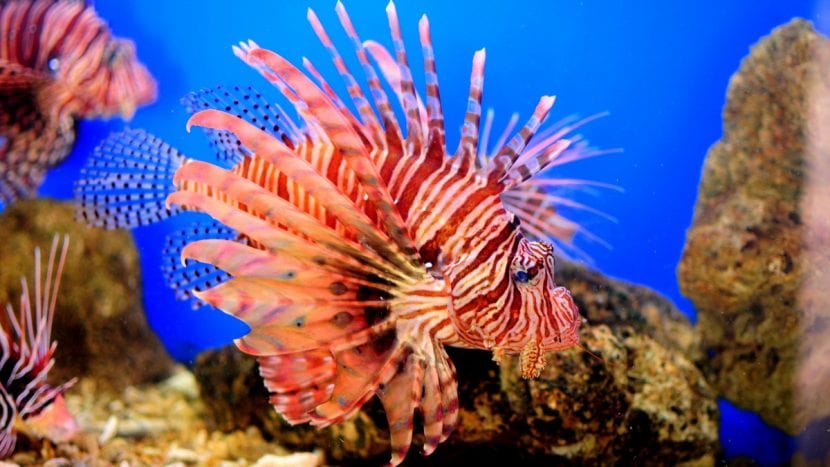
Fish make up a group of beings of the most varied that we can observe in nature. They are found throughout the entire planet, staying in seas, rivers, lakes and various aquatic ecosystems. Varied characteristics and years of evolution that have resulted in a wide range of species, each more peculiar. On this occasion, we are going to tell you about a strange, although well-known type of fish: the Scorpion fish.
In this article you have the opportunity to learn a little more about this wonderful animal, which, among many other things, stands out for its dangerousness, which has not given it a very good reputation.
Habitat
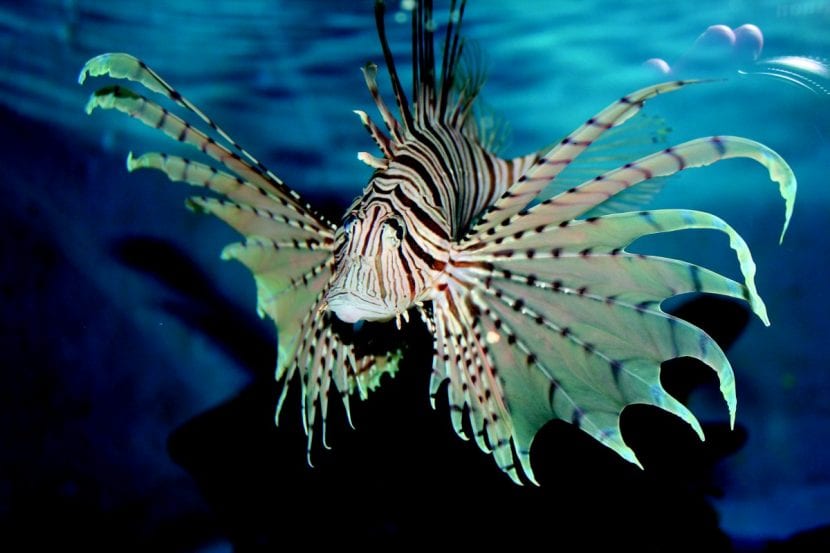
Indeed, the scorpion fish is a fish that has adapted especially well to different types of aquatic habitats. It is easy to find them in various parts of the world, since it is not a specific fish from a specific area or area. Yes you have to comment that the largest populations are located on the coasts of Australia, Fiji, the Indian Ocean and the Red and Yellow Seas.
In general, it tends to have a certain predilection for deep waters (over 150 meters), such as seabeds or ocean depths. However, it is not uncommon for it to be found in other types of places such as in the small ponds that are formed from low tides.
Characteristics of the scorpion fish
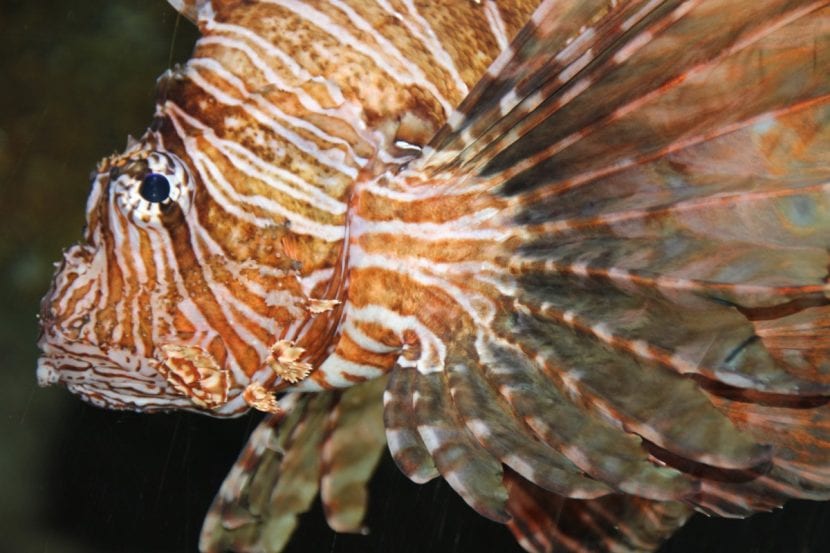
The scientific name of the scorpion fish is scorpaenidaeas it belongs to the fish family Scorpaeniformes, which roughly could be said to be those bony fish endowed with spiny extensions on their bodies.
It should be noted that the scorpion fish holds the title of being one of the species de peces Older. One of the first fossils found dates back to the time of the Paleocene, encompassed in the Lower Tertiary.
It is not a large creature. Their body, both in male and female individuals, does not usually exceed the 30 centimeters in length (normal is 15 centimeters long). This body has an elongated and compressed shape, and is equipped with several poisonous spines. These poisonous spines are most numerous on the head, dorsal fins, the quadratic fin, and pelvic fins.
The head is much larger compared to the rest of the body, and it has a large mouth that is arranged obliquely, while the eyes are kept vertical. Also, it has large tentacles on its skin.
The scorpion fish is one of the animals that has acquired the best conditions for camouflage. Depending on the habitat it occupies, this type of fish manifests one hue or another in its skin and scales. As a general rule, the predominant colors are yellow, brown, green and red.
Regarding their behavior, indicate that they are fish with a very strong character. Males are territorial and fierce. This condition has resulted in them having a rather sedentary way of life. If you want to introduce the scorpion fish in your aquarium or pond, keep in mind that it does not have to be accompanied by fish smaller than its size, with more scorpion fish or simply with invertebrate fish. If he seems to get along with those vertebrate fish that considerably exceed him in size.
Food
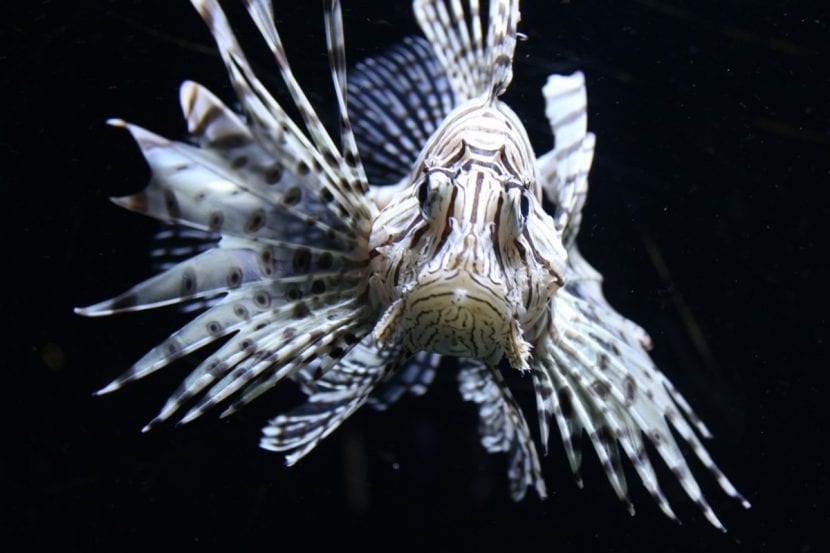
Scorpion fish are a big predators. His successful capture method is largely due to something we discussed earlier, his ability to camouflage. The scorpion fish hides until its prey appears, which it surprises in tenths of a second by swallowing it.
It usually catches very small fish, small mollusks, crustaceans, etc.
Danger
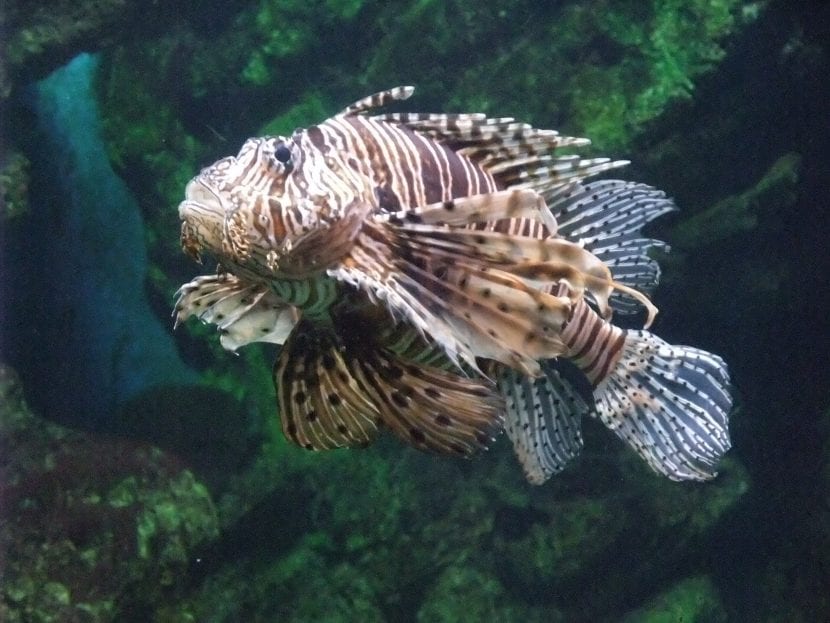
As we mentioned at the beginning of the article, scorpion fish do not have a very positive reputation. They are poisonous fish, protagonists of several of the most common bites that take place on beaches and coastal areas.
El poison (toxic and vasoconstrictor) of this animal carries consequences such as strong inflammation of the part of the body affected by a bite, continuous vomiting, great pain and feverish processes. In the most severe cases, the subject can suffer from respiratory insufficiencies and much more severe cardiorespiratory problems.
Commonly, scorpion fish bites take place on the soles of the feet, since as these animals remain immobile on the sea floor for long periods of time, it is very easy to step on it and thus sink one of its spines.
If unfortunately we have been bitten by a scorpion fish, the steps to follow so that the damage is the worst possible are: apply ammonia in the area of the bite, complemented with an application of heat that should last around an hour and a half. However, as always, it is best to go to the nearest health center or doctor who will best evaluate our condition and can provide the most appropriate remedy.
We hope we have brought you closer and presented in greater depth to this fish that you have surely heard about and with which many will have had to deal with more than fortuitous encounters during their baths on beaches.
I really like the web and all the info, but I think that's the lionfish, not the scorpion.
regards
Excuse me, what is the name of the scorpion fish venom?
The information is wrong, it belongs to the Order Scorpaeniformes and the Family Scorpaenidae, I invite you to review your information, for taxonomy of marine species there is the "World register of marine species" (WoRMs)